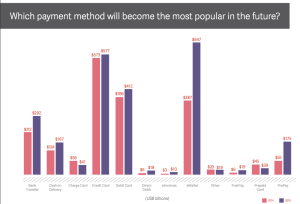Sometimes, your marketing efforts are so good that it instantly helps direct a ton of traffic to your website. But although you have visitors on your site, you realize that they quickly exit from it without going to any other page.
As a result, your bounce rate increases, and it becomes difficult to achieve your conversion goals. Bounce rate is the percentage of visitors that land on your website and decide to exit without exploring the site any further or clicking on your CTA(call-to-action) button for conversion.
Having a high bounce rate on your site decreases your profit and prevents your business from being as successful as you thought it would be. But as entrepreneurs, you don’t want that to happen to your business. Therefore it’s important to decrease your bounce rate at the earliest.
If you’re not sure how to do that, don’t worry. Here are 3 easy ways to decrease your bounce rate to boost your conversions and increase your profit.
1. Improve Your Website Speed
Have you ever landed on a website that takes hours to load? If you have, you surely know how frustrating it is to wait for the site to load completely. So what do you generally do in such cases? You mostly opt-out of the site and look for other options to check out, right? That’s what your audience would do, too if your website has a slow loading speed.
But you should remember that every visitor you have is a potential customer. So losing a visitor might mean losing a potential customer. That’s why it’s important to improve your site speed just so that you can retain your visitors for longer and encourage them to explore your site further.
There are several ways to improve your website speed. But the most important step is to choose a good web hosting service. Other than that, you should also consider compressing your images before publishing them, optimizing your CMS database, and keeping your plugins and themes updated. It is also helpful if you minimize the number of JavaScript and CSS files so that it doesn’t make your site unnecessarily heavy.
2. Use Images and Videos for More Engagement
Another effective way of reducing your bounce rate is to engage your audience through images and videos. Some marketers don’t use any media files in their posts. This makes the post dull and boring. And people avoid reading posts that look like a wall of texts.
Adding an image or a short video file can instantly boost engagement by making your post more interesting. Such files not only hook your readers but also make it easier for you to convey your message better.
Your readers, too, find it more convenient to understand your message because of the visual representation that these files offer. When they find it interesting, they tend to spend more time on your site. This helps you retain them for longer, which, in turn, decreases your overall bounce rate.
3. Optimize Your CTA Placement
Many users opt out of your site because they find it difficult to locate your CTA. Not finding your CTA confuses them because they don’t know how to get what you’re offering. So instead of wasting time, they opt out of your site. This is a major mistake that many marketers make. As a result, you end up losing a potential customer who was just about to convert.
To prevent this from happening again, you need to optimize the placement of your CTA. Make your message clear, describe what you’re selling and add a prominently visible CTA to your site. Your call-to-action should be clear and honest and should never mislead your users. Misleading your visitors will damage your brand reputation, and you’ll end up losing your customers.
These are some of the ways to decrease your bounce rate. If you want to achieve your conversion goals and make more sales, decreasing your bounce rate is extremely important. So if you haven’t considered working on it, get started now.
Digital & Social Articles on Business 2 Community
(43)





